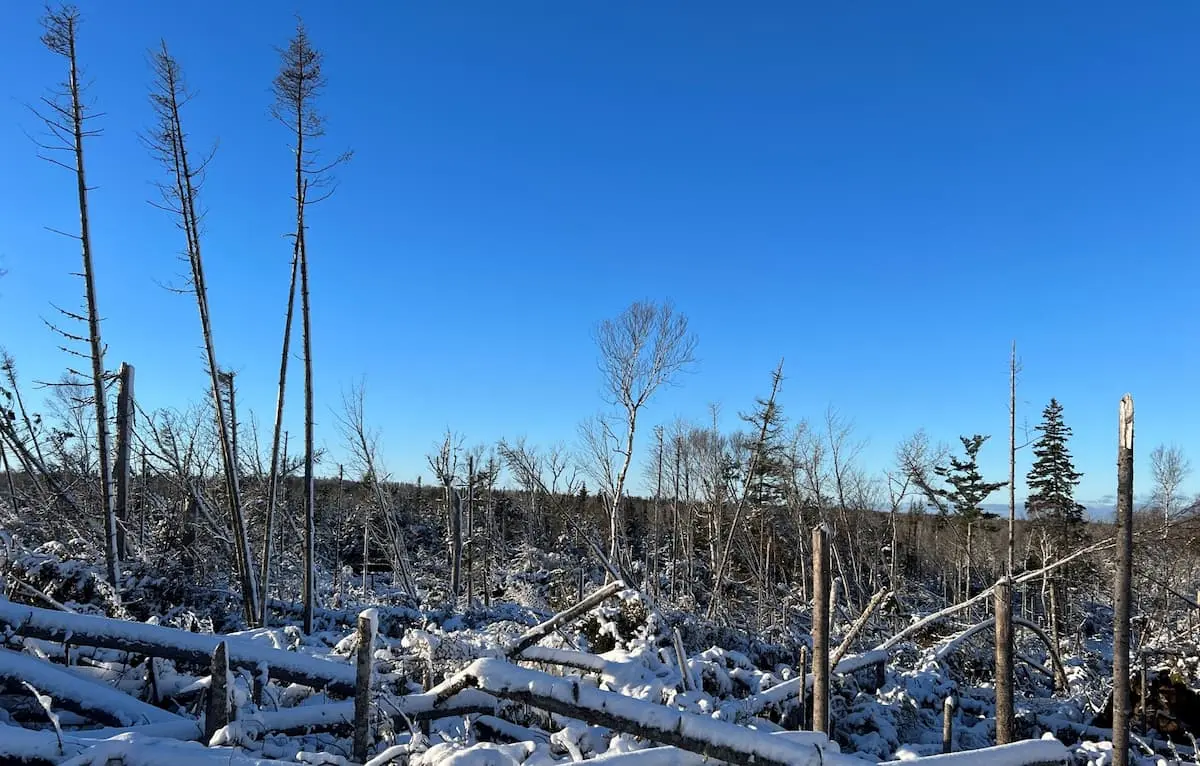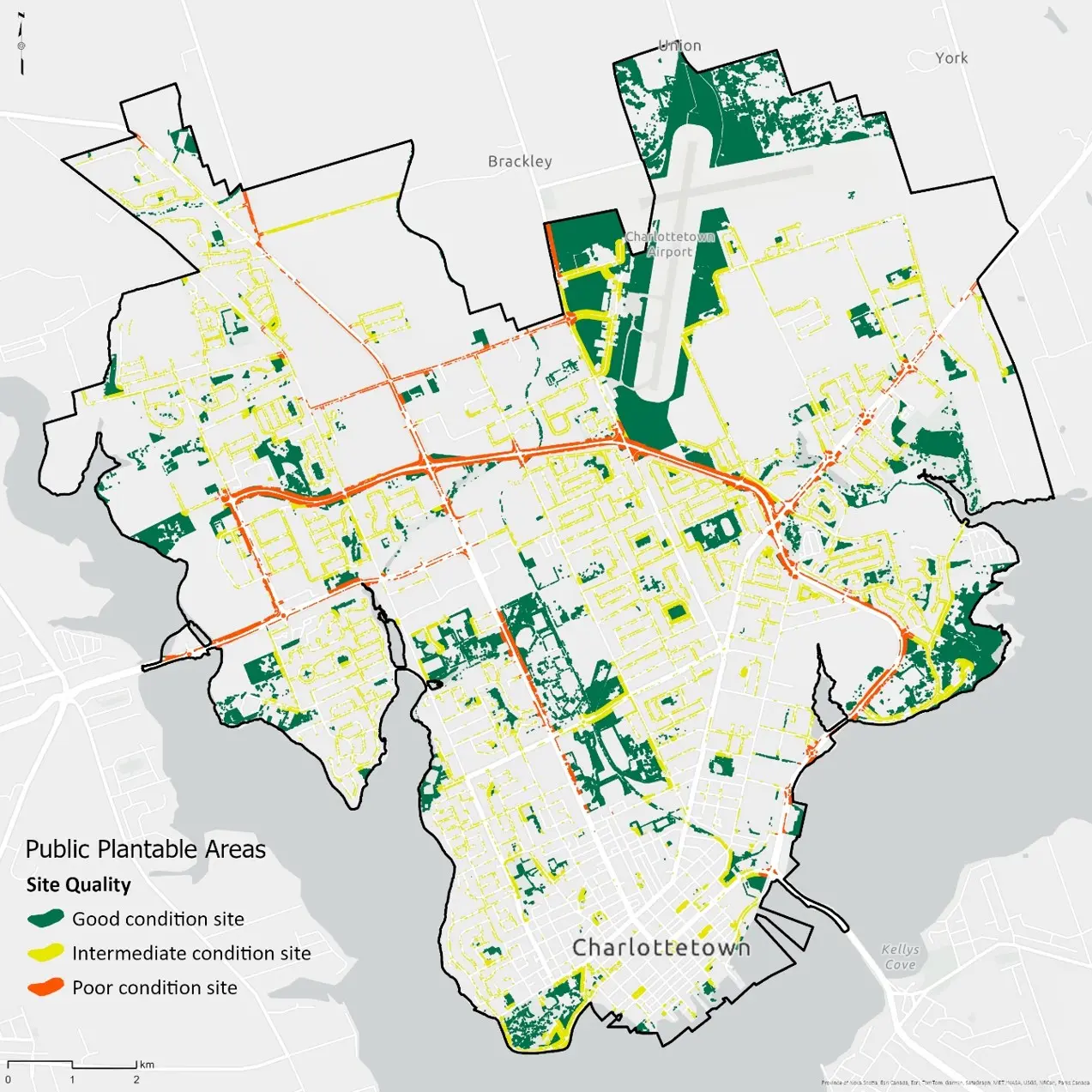Charlottetown Urban Forest Restoration Strategy
Charlottetown, Prince Edward Island


Project Overview
Following the extensive damage caused by Hurricane Fiona in September 2022, Dougan Ecology developed the Urban Forest Restoration Strategy for the City of Charlottetown to help restore and strengthen the city’s urban canopy.
Our team conducted a detailed assessment of the storm’s impact, estimating the loss of approximately 12,600 mature trees, with the greatest damage occurring in downtown areas and municipal parks. These findings highlighted the need for a coordinated, long-term recovery plan to enhance the city’s resilience to future climate-driven events.
The resulting strategy outlines a 10-year phased restoration plan designed to return canopy cover to pre-storm levels. It recommends planting over 11,000 trees annually during the first five years, followed by 5,000 trees per year for the next five. The plan also establishes realistic canopy cover targets for parks, woodlands, riparian corridors, and trail systems, ensuring equitable canopy distribution and maximizing ecological and community benefits.
This strategy provides Charlottetown with a clear roadmap for building a healthier, more resilient urban forest, supporting biodiversity, enhancing public spaces, and improving climate resilience for the community.
-
Natural Heritage Inventory
-
Mapping and Remote Sensing
-
Habitat Design and Restoration
-
Assessment and Monitoring
Project Highlights
Leveraging advanced machine learning, satellite imagery, and LiDAR, Dougan Ecology quantified the urban canopy lost to Hurricane Fiona and pinpointed optimal areas for replanting. The project team then developed a phased, data-driven restoration plan to restore over 447 hectares of suitable planting areas. By incorporating climate-resilient species, Miyawaki-style forest techniques, and a strong focus on community engagement, the strategy establishes the foundation for a healthier, more resilient urban forest.
-
Developed a 10-year phased planting strategy to restore pre-Fiona canopy levels
-

Integrated the Urban Site Index to guide climate-adaptive species selection
-

Applied the 10-20-30 biodiversity rule to enhance species resilience
-
Incorporated Miyawaki-style forests and cluster planting in our strategy to maximize ecological impact
-

Identified 447 hectares of public land for strategic reforestation
-
Completed high-resolution canopy mapping using deep learning, LiDAR, and satellite imagery
Our Approach
At Dougan Ecology, our approach to urban forest restoration transforms post-disaster recovery into an opportunity to build lasting climate resilience and ecological equity. Using high-resolution spatial analysis, we design strategic planting and restoration plans that go beyond replacing lost trees by enhancing biodiversity, creating vibrant green spaces, and strengthening the environmental health of urban landscapes.
With proven experience developing large-scale restoration strategies such as this, Dougan Ecology is uniquely positioned to help municipalities across Canada recover from extreme weather events and proactively plan for a changing climate. Our team provides end-to-end support, ensuring every community can achieve a healthier, more resilient urban forest for the future.




